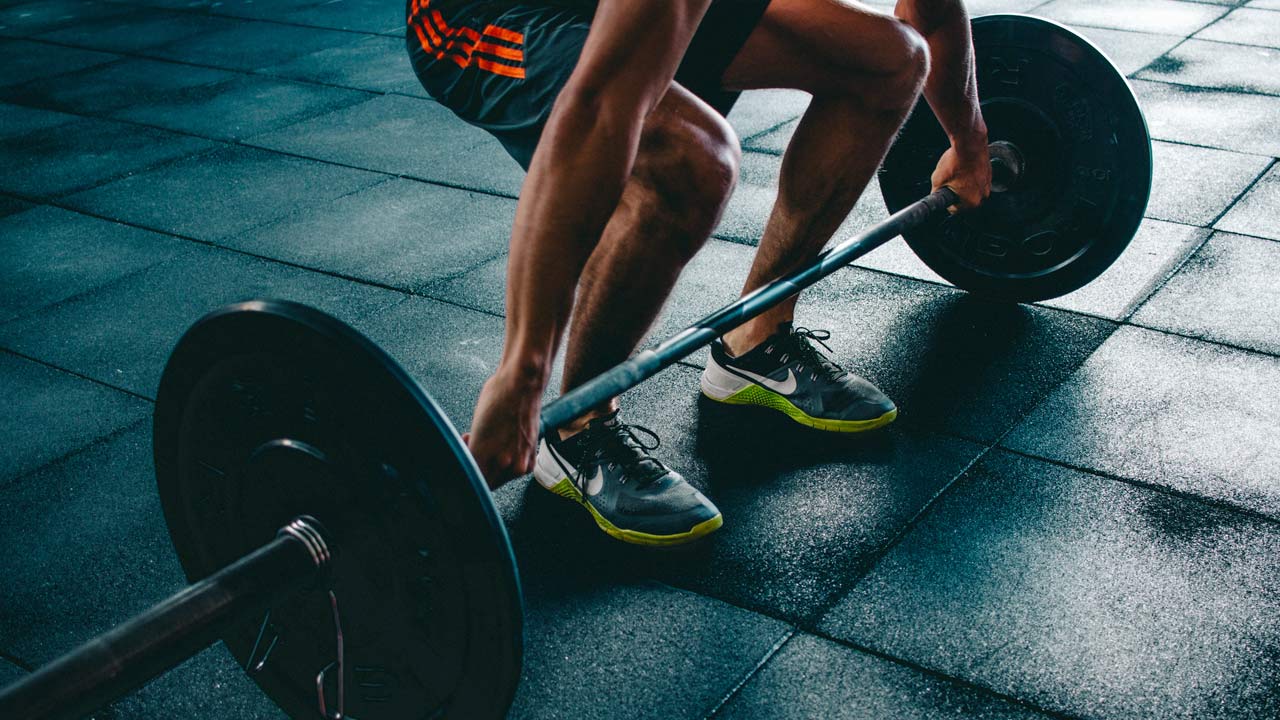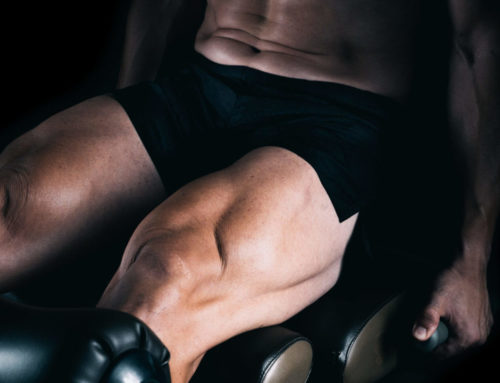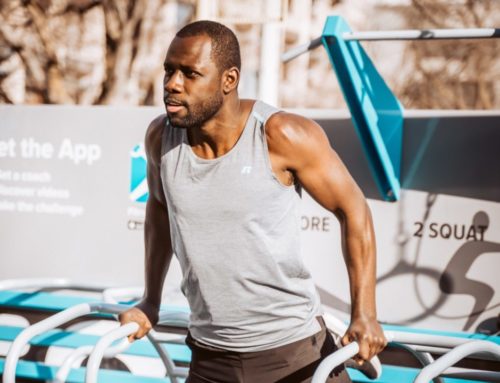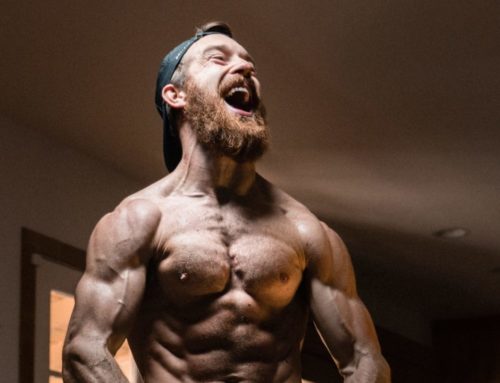Tank tops and racer backs have been gracing gyms across the world for eons, but recently the social acceptance and popularity of men’s leggings have highlighted the inauguration of “dude glutes”. We’ve got you covered with the best glute exercises for men, all packaged up in a tight, perky glutes workout.
Until now, glute training has historically been a female-oriented topic.
However, glute-focused training for men is becoming more and more recognized not only for improving your overall aesthetic, but also performance and injury prevention.
Here’s how to do it in a way that suit’s your physique.
TRAINER
Adam Bisek is a certified strength and conditioning specialist, owner of BeSickFitness and nutrition coach. Besickfit.com
Glute exercises for men – why bother?
Before getting to the “why and how” of glute training, it’s important to really understand the structure and function of the gluteal muscle group.
The glutes are a relatively equal mix of Type 1 and Type 2 muscle fibers, which means that a variety of load and repetition schemes should be utilized when it comes to their development, says research in the Journal of the Neurological Sciences.
Macroscopically the glutes are made up of three muscles; the maximus, medius, and minimus. And when it comes to training, the maximus and medius are more often addressed as they play a larger role in gross movement patterns.
The gluteals have a multitude of muscle actions (see the table below) and are responsible for creating movement in all three planes of motion: sagittal (forward and back), frontal (side-to-side), and transverse (rotation).
Their main role involves driving your leg backwards (hip extension) and exhibiting strength and stability when encountering side-to-side or rotational forces (hip abduction and rotation).
Some good examples of this are coming back up out of the bottom of a squat or sprinting laterally: both call greatly upon the function of your glutes.
What do your glutes do?
| Glute Muscle | Main Actions |
|---|---|
| Gluteus maximus | Hip extension, abduction, external rotation |
| Gluteus medius | Hip abduction and adduction, external and internal rotation, extension and flexion |
| Gluteus minimus | Hip abduction and adduction, external and internal rotation, extension and flexion |
Men need glutes too for the complete aesthetic package
When it comes to aesthetics, subjectivity rules; essentially, beauty is in the eye of the beholder.
However, on the whole, a well-developed set of glutes expresses a strong, powerful, and athletic physique, something that most would agree is appealing.
Not to mention the glutes are the largest muscle group in your body, says a paper in Okajimas Folia Anatomica Japonica, and play a critical role in larger, multi-joint lower body and hip extension exercises (e.g. squats, deadlifts, lunges), arguably some of the best overall physique builders.
These same exercises require the use of a larger degree of musculature and oftentimes a greater amount of total energy expenditure.
Glute strengthening exercises give you ultimate performance
Most sport takes place in multiple planes of movement and often requires a high degree of speed and strength in those planes.
Because of the glutes’ multiplanar actions, their strength can prove integral to your performance.
It has been proven in the Strength and Conditioning Journal that with increasing load during common weight lifting exercises (i.e. squats, lunges, deadlifts), greater jump heights, and increasing sprint speeds that hip-to-knee extensor moment ratios increase.
In plain English this means the muscles governing hip extensions (glutes and hamstrings) are called upon more so than the ones that govern knee extensions (quads) when activities increase in intensity.
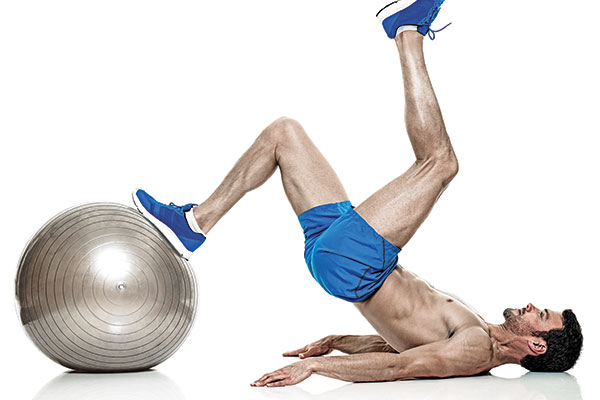
Strong glutes mean less injuries
Ask any seasoned personal trainer what the most common pain complaint they field, and the answer you’ll get is back pain.
While this is a very nuanced and multi-factorial issue, a lack of lumbo-pelvic-hip mobility and glute strength are often big contributors.
When someone lacks the requisite strength for a given task, they create faulty compensation patterns to accomplish them.
More often than not, weak glutes can cause untoward force being placed on the muscles of the lower back leading to an acute injury and/or chronic pain.
the right glute exercises for men (and women) can tackle this issue.
Glute workout for men
In reality, if you are participating in a well-rounded strength-training program, you’re most likely training your glutes in some capacity.
However, prioritizing your glutes may require utilizing activation techniques, better exercise selection, increasing training frequency and/or volume, or even being more intentional during the lifting process.
While some of those topics are beyond the scope of this article, providing quality examples and their execution is most definitely not.
Here is an example of a glute-targeted lower body training workout that will set you on your way to a stronger, well-developed backside:
Romanian deadlift (RDL)
3 sets of 5
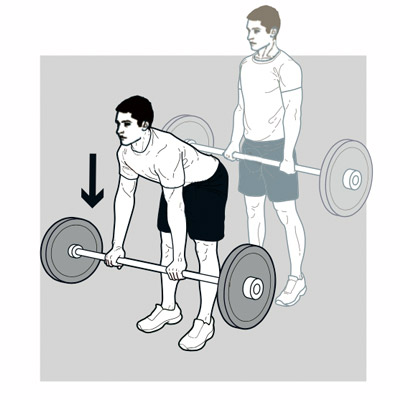
A) Descend by pushing your hips back while keeping a “flat back” posture and a slight, fixed bend in your knees. Take on the load in your glutes and hamstrings as they lengthen.
B) Finish the movement by driving your hips forward into full extension and tuck your butt under. Use warm-up sets to build up to five reps, keeping 1 or 2 reps in the tank. Do 2 more sets of 5 at that weight and progress slightly in weight week-to-week.
Bulgarian split- squat (BSS)
3 sets of 8-10 reps
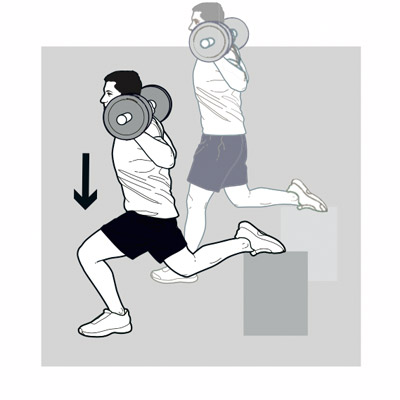
A) Elevate your rear foot on a bench or roller that’s 12-16″ in height. Your stride distance should be long enough to keep your heel down throughout the movement, but short enough that your hips don’t rotate.
B) Begin your descent by pushing your hip back and then bending your knee. Lean forward at your torso. This execution turns this into a hip/glute dominant exercise. If you have excessive stretch in the hip flexor of your rear leg, your bench is too high or too long a stride.
Hip thrust
3 sets of 8 (1 second pause at the top of the repetition)
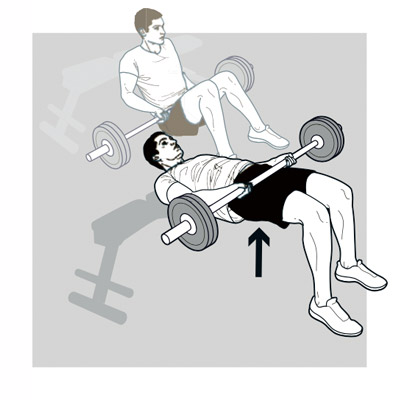
A) Use a hip thrust apparatus or sturdy bench that is 14-16″ off the ground. You will need a barbell. Place your back on the bench so that you will hinge at the bottom of your shoulder blades.
B) Now tuck your chin down, drive through your heels and your hips. Then tuck your butt under slightly and hold the weight for a second.
Use several warm-up sets to establish a good eight repetition weight. Execute the next two sets and try to progress week-to-week.
Roman chair (45 degree) hip extension
4 sets of 15-20 reps
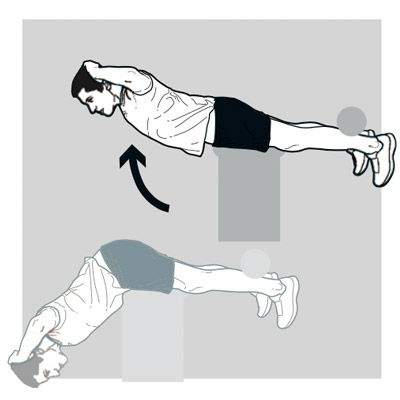
A) Use a standard Roman chair and set the height so the top of the leg pad sits at your hip crease.
Rotate your feet outward slightly, flex over at your spine as if you’re holding an abdominal crunch, and descend to a full stretch.
B) Maintain that spinal flexion as you squeeze your glutes and drive your hips into the pad. This will look odd compared to a typical back extension.
It also keeps the spinal erectors in a lengthened state so it can be carried out by the hip extensors (glutes and hamstrings).
Seated band hip abduction
3 sets of 30
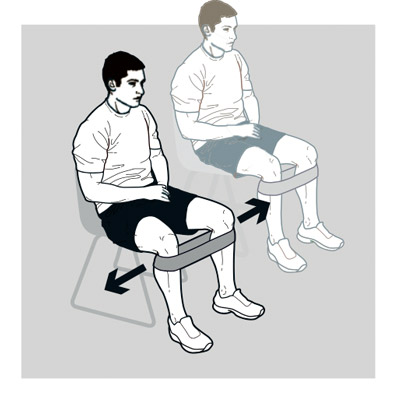
A) Take a seat so your knees make a 90-degree angle. You can use any band you wish, just make sure its one that allows you to have tension throughout the movement and allows for a full range of motion.
Start with your knees at roughly shoulder width and your feet just slightly outside of that. This will put you into slight hip internal rotation.
B) Now drive your knees outward keeping good posture and a slight bend forward at your hip.
Glute exercises for men will make you the complete athlete
Perform this glute workout for men as part of your regular weight training routine, particularly if you feel that your Levi’s aren’t hanging off your body in the way they should.
You’ll be rewarded with better sports performance, a greater resistance to injury and a physique that ticks every box.
For more content about the best glute exercises for men, nutrition tips, and training advice, get TRAIN magazine direct into your inbox every month for free by signing up to our newsletter


